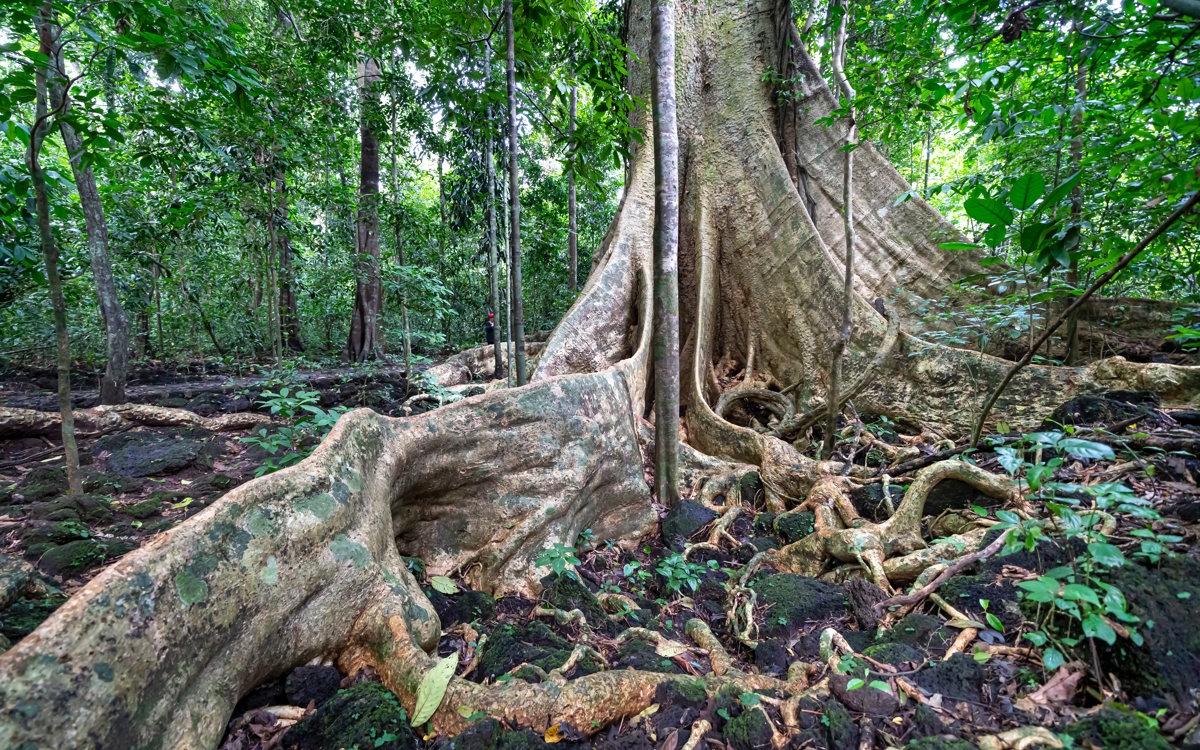By Olujumoke Ogunrayi


Olujumoke Adesola Ogunrayi
Nature surrounds us. We see, smell, hear, taste and feel nature. We never stop marveling at the beauty of the ocean and its immense size, or the marvelous, woodsy fragrance of a forest. The splendor and the beauty of nature can be breathtaking and awe-inspiring, and it often shapes our social and cultural understandings of the natural world.
Fundamentally, nature has many meanings – from the earth itself and life that inhabits it, to the geology, landscapes, and sceneries that make up our natural world.

Culture, on the other hand, is symbolic. It embodies objects, the meaning given to those objects, and the norms, values, behavior and beliefs that reflect the way we understand ourselves as individuals and as members of society. It is the knowledge we possess that allows us to act or behave in such a way that is understandable by those around us. Different societies and communities are defined by different cultures.
So how are culture and nature related? One thing to consider is that they both influence the way we think and relate to the world around us. Nature can be seen as a cultural construction of the natural world. For example, English art historian Simon Schama quotes that ‘landscapes are culture before they are nature; constructs of the imagination projected onto wood and water and rock.’
It is difficult to think of a single natural system that has not, for better or worse, been substantially modified by human culture. The cultural habits of humanity have always made room for the sacredness of nature, and protecting the natural environment is often closely linked to safeguarding a community’s cultural heritage.
Cultural notions of sacred nature
Many communities with cultural traditions emphasizing the protection of nature encourage people to take it upon themselves to protect their biosphere.
Across Africa, communities have acquired knowledge about nature through their culture, and daily interactions and perceptions of their immediate environment. For some coastal communities in West Africa in particular, the sea constitutes a big mass of water with fish that is inhabited by a god. We can look to the Ilajes people in Ondo State, who believe in the concept of a sea god named Malokun (ayelala). They believe that the sea is angry whenever there are tidal waves, coastal flooding, or coastal erosion. Hence, they make sacrifices to appease Malokun.
Similarly, there are rivers in southwest Nigeria that people don't fish, since fish are seen as a means of educating younger generations and enhancing eco-tourism. Likewise, many cultures have set aside large forest areas where all trees and wildlife within a designated zone are deified and given total protection.
Sacred groves or sacred forests – relic forest patches traditionally protected by communities in reverence of a deity – also come to mind. These landscapes, which can be found in countries like India, Nigeria, Ghana, and Benin to mention a few, have been carefully managed over tens and even hundreds of years. Sacred forests connect to other natural ecosystems and protected areas through ecological corridors, gallery forests, rivers, and water bodies, creating biological connectivity and a spatial or ecological network. They also form important repositories of biodiversity and provide refuge to many plant and animal species of conservation significance.

Moreover, sacred forests generate other ecological benefits, some of which go beyond the area immediately covered by the sites. These include the protection of water sources, barriers against soil erosion, safeguarding of soil fertility, and carbon sequestration.
Aside from preserving the religious and cultural heritage of local communities, sacred forests also play a role in maintaining the region’s microclimate, in addition to preventing soil and nutrient loss.
Connecting culture to climate action
Experts are concerned that our natural world, and the forces within it, are so out of balance that soon the planet will no longer be able to sustain life as we know it. For example, while forests and trees – which are so vital to our existence - can grow very strong to withstand powerful pressures, scientists say we are in danger of losing this precious resource.
All societies are in a constant battle with nature through ecological degradation and exploitation. The destruction of wildlife, climate change, and so many other threats upset the stability of communities by destroying the very foundation of sustainability.

We must not forget that nature and culture are inextricably related, so a shift in one often results in change in the other.
To build ecological consciousness, there is first a need to understand the relationship between communities and the natural environment, and the role of culture in all of this. It’s also important to note how culture influences consumption decisions which may impact biodiversity, contribute to greenhouse gas emissions, or shape people’s responses to biodiversity loss and climate change. Research, and the co-production of knowledge with communities, play a key role in strengthening our understanding of nature and culture.

Indeed, we must recognize the multiple values of the natural environment for human cultures – and identify and overcome diverse barriers to behavioral change – in order to effectively address climate change and environmental degradation around the world. This must come in addition to incorporating cultural practices throughout approaches to ecosystem management and governance.
